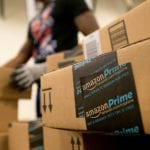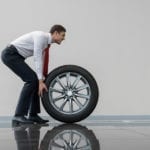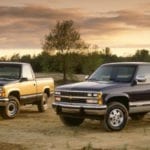When Ford announced the Bronco’s return, I immediately knew I wanted one. I fell in love with the Bronco as a young driver when my date picked me up in a dilapidated hand-me-down of his father’s with staples holding the headliner in place and a coat hanger and duct tape strategically keeping the rearview mirror in the perfect position. I’m ashamed to say I remember more about the Bronco than I do the date and my company, reminiscing on the fun-loving spirit of even that well-loved model with so many stories and so much capability under its hood.
The modern Bronco is everything I imagined it would be, but I can’t say there’s one parked in my garage. Unfortunately, the current market has made that nearly impossible, as vehicle prices soar and even lightly used Broncos fetch new-car prices in my area. Moreover, I’m not yet ready to endure the age-old car-buying process and the long hours of negotiation that my grandfather took so much pride in when we were kids. Perhaps, if I wait long enough, prices will come down, and dealerships will realize the importance of listening to buyers and their needs. It seems we might be heading in that direction, at least, I hope.

A New Reality for Dealerships
As we move another year away from the pandemic, there are ongoing shifts in the automotive industry and how dealerships do business. Over the last few years, we’ve seen prices skyrocket as demand surpasses supply, forcing automakers to do everything they can to keep up, combat supply chain issues, and retain employees. As a result, dealership lots around the country became barren, giving us more reason to pause over what was happening to the industry.
Although dealerships struggled to fill their lots with the latest models, automakers rediscovered a basic fact of supply and demand. The more something is in demand, and the less there is, the more people want it. We often want what we can’t have. It’s why so many online retailers advertise limited quantities or low stock because it appeals to our urge to get something before it’s gone. Call it competitiveness, selfishness, or greed; it’s a tenant of consumerism we play into daily.
This low supply of new models increased demand and earned many automotive brands record sales in 2021 as consumers proved they were willing to pay more for vehicles than in the past. Dealerships joined the craze, marking new models thousands of dollars over MSRP to squeeze every cent of profit possible. The result has been phenomenal, with some dealerships seeing a 242% increase in sales from 2019 to 2022.
This increase in profit is twofold and bittersweet. For years, automakers have rolled models off their production lines and relied on dealerships to sell their ever-growing inventory. However, inventory is costly for a dealership to own, which is why you’ll find so many end-of-year incentives as dealerships try to move inventory to cut operating costs that eat into their profits. Over the last few years, dealerships haven’t dealt with these expenses because of inventory shortages, fueling their rapidly increasing bottom line. However, it’s also given automakers a preview of a direct-to-consumer model like Tesla that eliminates the dealership entirely. The question is, “Are we ready for that?”
Not Your Grandfather’s Car-Buying Experience
Buying a car is a big deal for most of us; it always has been. There’s something to be said for investing in something new, particularly a model you’ve been eyeing for months. For my grandfather, it was a Chevrolet truck and a Cadillac sedan, a process he began dressed in his Sunday best and armed with excitement and plans to negotiate. He didn’t mind spending hours at a dealership haggling over prices or finalizing the paperwork; it was expected, mandatory even. Anything more efficient was beyond imaginable.
There’s still some truth to that experience in the modern dealership environment. Driving around the local Ford dealership even to browse means a team of overzealous salespeople following me in a golf cart and tapping on my window, hoping to lure me into a sale. I know what I want, and I know that I’m not too fond of the car-buying experience of my grandfather’s generation. For consumers like me, it’s time for a change, but does that change mean doing away with dealerships altogether? Probably not, given current laws against car manufacturers selling directly to consumers.
Dealerships are still integral to the automotive industry, but they must evolve to meet a new generation of needs. We’re no longer looking to spend an entire Saturday browsing lots and negotiating a fair price. Instead, we arrive knowing what we want and armed with facts gleaned from hours of research. We don’t need to be sold on a brand, a model, or a package. We simply need a dealership to save us some time, finalize the paperwork, and toss us the keys.
Fortunately, many dealerships are evolving, shedding the facade of the old car-buying experience to something more suitable for our current needs. We see this in virtual showrooms that allow us to browse from the comforts of our couches with coffee in hand. It’s also apparent in how dealerships streamline the buying process, allowing us to complete most of the paperwork online and ahead of time. Some dealerships are taking this even further, delivering your vehicle once it’s ready or letting you schedule a test drive so that you have complete confidence before you say “yes” to the deal without ever setting foot on the dealership lot.
It’s safe to say my grandfather would be amazed at this evolution, blown away by the mere idea of buying a car in my pajamas without any need to negotiate. Transparency wasn’t integral to his car-buying experiences, and I think he preferred it that way because it gave him room to haggle until he was satisfied with the deal. This generation of consumers, myself included, doesn’t have time to negotiate, and we’ve proven as much over the last few years.
The Fate of Dealerships
Wall Street has promoted a direct-to-consumer approach for nearly a decade, with Tesla jumping on board and proving it’s entirely possible. However, Tesla is a fringe case, and most state franchise laws do not allow for that kind of direct-to-consumer automotive sales model to exist currently, hence the need for the traditional dealership. However, the last few years have shown that dealerships might be inhibiting the market rather than helping it. After all, many consumers are frustrated with dealer markups (that are done independently of the brand’s input), and these markups are reflecting poorly on brands as a whole. In fact, many automakers are making moves to discourage dealerships from price gouging, but ultimately that final dealer price is out of their control.
This doesn’t mean that dealerships are all bad or that they shouldn’t exist. Dealerships offer a unique business advantage because they’re standing on the front lines, face-to-face with consumers. Think about anytime you have to call customer service for an issue and you’re routed to a third-party company overseas. The tech usually does their best to make it appear like they have your best interests at heart, but the experience is ingenuine and often frustrating. Now, imagine this when you need assistance purchasing a vehicle. It’s a significant investment that requires a personalized touch, don’t you think?
Dealerships are that personal touch. They’re standing on the front lines of the industry, building relationships, and giving customers a place to find answers to their questions and solutions to their problems. Of course, consumers still want that, but dealerships must evolve to meet new demands, prioritizing efficiency and making the car-buying experience more accessible to a new generation of tech-savvy buyers armed with information and ready to buy without the hoopla our grandfathers once expected. If they don’t, there may be a push to do away with the traditional car-buying model in the future.





